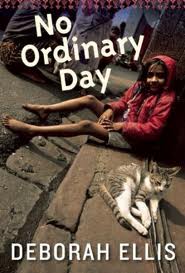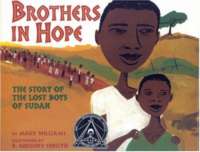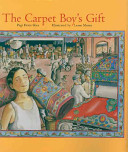A Community Exploration of Global Literature and Social Justice
Merna Hecht
Our Vashon Island Literacy Community is located on a small island between two major cities in Washington and included members from public schools and a non-denominational private school. The group included a middle-school librarian, two s middle school humanities teachers, (one public school, one private school), the Family Link/Student Link teacher, a Family Link Program parent and an arts educator who teaches arts and social justice at the university level and works with immigrant and refugee high school students.
Our group wanted to explore global literature with middle school students to focus on social justice issues and oppressive social and political situations. We wanted our students to develop empathy for others and a vision of how to participate to change things for the better. We also wanted to create connections across a range of social agencies and educational contexts for middle schools students on Vashon Island. One outreach of the group was to create an exhibit of student work for the local community.
The study group meetings involved discussions of at least five new books at each monthly meeting. We discovered many new titles for our projects that we intend to use to create integrated humanities, literature, social studies and art projects. Our discussions were engaged, lively, and intellectually satisfying. When some or all of us read the same title, we relished exchanging our different opinions, insights and review styles. We used our meeting times to address many aspects of each book we reviewed including the reading level of the book, issues to which parents might object, age appropriateness, the kind of readers who might benefit from the book, where it might best fit into an existing curriculum, how much additional context, background information and other reading and research might be required for the students to fully understand the book, how it could be used as a mentor text for classroom projects and possible connections to community resources. We also made decisions as to which titles would be added to library collections and which to designate for classroom projects or classroom sets.
 Our classroom work included a focus on widening perceptions of the world and expanding a world view in order to become informed global citizens, The focus for this was on modern India. Tim Heryford, the seventh-grade humanities teacher in our group, wanted to provide students with an introduction to realistic aspects of India while at the same time focus on issues of poverty, human rights, and discrimination based on bias, fear, and incorrect or inadequate information. He used Deborah Ellis’s No Ordinary Day (2011) as a mentor text. He read it aloud and followed the reading with a study of human rights, including the UN Commission on Human Rights and Children’s Rights, a study of leprosy, and a focus on Gandhi using After Gandhi: One Hundred Years of Nonviolent Resistance by Anne Sibley O’Brien and Perry Edmond O’Brien (2009). Classroom work included bringing in a guest artist for several sessions and using many techniques of layering in visual learning which resulted in a mandala project. Students also created short graphic novel-like books about the main character’s experience in No Ordinary Day when she had to come to terms with her fears and misconceptions about leprosy.
Our classroom work included a focus on widening perceptions of the world and expanding a world view in order to become informed global citizens, The focus for this was on modern India. Tim Heryford, the seventh-grade humanities teacher in our group, wanted to provide students with an introduction to realistic aspects of India while at the same time focus on issues of poverty, human rights, and discrimination based on bias, fear, and incorrect or inadequate information. He used Deborah Ellis’s No Ordinary Day (2011) as a mentor text. He read it aloud and followed the reading with a study of human rights, including the UN Commission on Human Rights and Children’s Rights, a study of leprosy, and a focus on Gandhi using After Gandhi: One Hundred Years of Nonviolent Resistance by Anne Sibley O’Brien and Perry Edmond O’Brien (2009). Classroom work included bringing in a guest artist for several sessions and using many techniques of layering in visual learning which resulted in a mandala project. Students also created short graphic novel-like books about the main character’s experience in No Ordinary Day when she had to come to terms with her fears and misconceptions about leprosy.
 We also developed a project around the goal of working toward a more humane world through a focus on lesser known heroes and heroines who have made significant contributions to the cause of peace and human rights. Lauretta Hyde, a social studies/humanities teacher with seventh and eighth graders at the Harbor School implemented an integrated arts, creative writing and humanities project using this topic as her broad umbrella. Activities in her seventh grade classroom were inspired by a read aloud of The Breadwinner by Deborah Ellis (2002) and by in-depth use of several picture books. These included Brothers in Hope: the Story of the Lost Boys of Sudan by Mary Williams (2005); One Peace: True Stories of Young Activists by Janet Wilson (2009); The Carpet Boy’s Gift by Pegi Deitz Shea (2003) and Peaceful Heroes by Jonah Winters (2009). Peaceful Heroes pays tribute to fourteen people who risked their lives to help make the world a more peaceful place.
We also developed a project around the goal of working toward a more humane world through a focus on lesser known heroes and heroines who have made significant contributions to the cause of peace and human rights. Lauretta Hyde, a social studies/humanities teacher with seventh and eighth graders at the Harbor School implemented an integrated arts, creative writing and humanities project using this topic as her broad umbrella. Activities in her seventh grade classroom were inspired by a read aloud of The Breadwinner by Deborah Ellis (2002) and by in-depth use of several picture books. These included Brothers in Hope: the Story of the Lost Boys of Sudan by Mary Williams (2005); One Peace: True Stories of Young Activists by Janet Wilson (2009); The Carpet Boy’s Gift by Pegi Deitz Shea (2003) and Peaceful Heroes by Jonah Winters (2009). Peaceful Heroes pays tribute to fourteen people who risked their lives to help make the world a more peaceful place.  Although some major figures are included, the book honors lesser known heroes and heroines such as Oscar Romero; Ginetta Fagan a young Italian woman who helped build Amnesty International; Marla Rizicka, a 24-year-old Californian who in 2001 began her travels to Afghanistan and eventually to Iraq to raise money for and give direct aid to innocent victims of war; Meena Keshwar Kamal, an Afghani woman, who at the age of 20, started an organization to help women in her country and in Pakistan find education and health care; and other unsung and lesser known figures.
Although some major figures are included, the book honors lesser known heroes and heroines such as Oscar Romero; Ginetta Fagan a young Italian woman who helped build Amnesty International; Marla Rizicka, a 24-year-old Californian who in 2001 began her travels to Afghanistan and eventually to Iraq to raise money for and give direct aid to innocent victims of war; Meena Keshwar Kamal, an Afghani woman, who at the age of 20, started an organization to help women in her country and in Pakistan find education and health care; and other unsung and lesser known figures.  From these diverse, rich resources Lauretta’s students wrote poetry, created large Venn diagrams comparing their lives on Vashon Island with Parvana’s life in Kabul. Parvana, the main character in The Breadwinner, is a young girl who must disguise herself as a boy to keep her family alive under siege of the Taliban in Afghanistan. Lauretta’s students also created illustrated books for younger children about “Peaceful Heroes.”
From these diverse, rich resources Lauretta’s students wrote poetry, created large Venn diagrams comparing their lives on Vashon Island with Parvana’s life in Kabul. Parvana, the main character in The Breadwinner, is a young girl who must disguise herself as a boy to keep her family alive under siege of the Taliban in Afghanistan. Lauretta’s students also created illustrated books for younger children about “Peaceful Heroes.”
The student work generated from our projects provided evidence that the students expanded their views of the larger world. Their work reflected new insights, awareness and compassion. The students were stretched in their thinking about global social and political situations and in their abilities to respond in visual images, poetry, creative writing, and synthesizing ideas as they looked at the world through the lens of the struggles of others in places and situations that are much different than their own. They were engaged in thinking about how others, young and old, all around the globe have contributed to peace and expressed their own ideas about bringing a vision of peace into the world in real and concrete ways.
Vashon’s members included: Nan Hammett-Student Link/Family Link teacher, Merna Ann Hecht, social justice/ literary arts educator, Tim Heryford, 7th grade Humanities teacher McMurray Middle School, Lauretta Hyde-Harbor School-Social Studies/Humanities teacher, Julie Jaffe-Librarian, McMurray Middle School, and Wintry Sheehan, parent educator for Student Link/Family Link program.
Explorations of India and Gandhi: Tim Heryford
Through my work with our study group, I learned of excellent contemporary literature about regions in the world that we study in my seventh grade humanities course. Throughout the year, I want students to connect with literature as both a mirror to their own life and a window into the lives of others. By reading realistic fiction, students can see how people all around the world live with the same universal needs and fears. I wanted to find books that would not represent India as “stuck in the past;” instead I wanted to find a book or books that would characterize modern day India. My students have a fairly superficial view of big world events–conflict, poverty, and disease—and I wanted to find literature that would dispel stereotypes and broaden their understanding of these topics.
No Ordinary Day by Deborah Ellis and After Gandhi by Anne and Perry O’Brien enriched my teaching of the history of India, as well as modern Indian culture, leprosy, and Gandhi’s influence on history. Students were deeply engaged in No Ordinary Day which tells the story of Valli, an orphaned girl dealing with extreme poverty and leprosy and of how she eventually comes to understand her disease and finds help and hope with a compassionate woman’s mentorship. As I read the story, students reflected on their privileges and the challenges Valli had to overcome to grow up as an impoverished teen in India. They also had misunderstandings about leprosy and this book encouraged a number of the students to do additional research and educate the rest of the class. Students made mini-graphic novels of the book with other activities and discussions occurring throughout my reading. The students were inspired by the book’s hopeful but realistic ending.
In conjunction with reading No Ordinary Day, students also learned the history of the independence of India and how Gandhi managed to accomplish this with nonviolent resistance. The class then used After Gandhi as a resource to connect to how other leaders such as Nelson Mandela and Cesar Chavez won the rights of their people after Gandhi had paved the way. Students created a word mandala with a Gandhi quote and then explained how it pertained to Gandhi’s actions, the actions of another famous figure, and their actions in school.
I was motivated and inspired throughout the process due to the positive pressure from the group members and leader to read widely and create interesting projects. This was a great opportunity and even as it required extra work I would not have wanted to pass on it. I know it is this collaboration that deeply enriched my teaching of India and Gandhi.
No Ordinary Day graphic novel 1 pdf
No Ordinary Day graphic novel 2 pdf
Becoming a World Citizen: Lauretta Hyde
I teach in an independent school on an island in the Puget Sound. I am the entire middle school social studies department instructing all three grade levels (6th, 7th and 8th). While the sixth-grade year is a fairly traditional examination of ancient cultures, the seventh and eighth grade years are more unique. We study topics that come under the umbrella of “Becoming a World Citizen.” We examine world religions, human rights, peace makers, the disenfranchised in America, etc. In seventh grade we also examine the Middle East, beginning the unit with the following essential question: “Why is this region of the world so full of violent conflict?” One of the projects for this unit was inspired by our literacy group and proved both easy to implement and engaging to students.
In order to pique students’ interest in the Middle East, I began the unit by reading aloud Deborah Ellis’s (2002) book, The Breadwinner. This book is a wonderfully told story of a courageous eleven-year-old girl who pretends to be a boy in Taliban-controlled Kabul, Afghanistan. She disguises herself in order to find work when her father is taken from their home and imprisoned on false charges. Typically, I would read for half the period and then students would work on researching general information about the geography, demographics, and economic health of the different Middle Eastern countries.
Upon completing both their research and The Breadwinner, students were asked to take a large piece of poster board and create a Venn diagram comparing their own personality traits with those of Parvana, the story’s protagonist. Where the diagram intersected the student would list traits he/she shared with Parvana. Surrounding the actual diagram were images of the student’s lifestyle and culture on one side, and images of life in the Middle East on the other. The poster paper was to be filled with images to push the students into thinking beyond obvious differences. The diagrams hung in the school’s main hallway, were later shared at our study group meeting, and eight were put on display in a well-used public hallway/gallery space adjacent to our local independent book shop. The students were able to find compelling images that depicted the difficulties of life in Afghanistan including images of the presence of war and its destructive influences as well as many other visual images that portrayed complexities of life in Afghanistan in a respectful but realistic manner,
Our other global project under the broad umbrella of “Becoming a World Citizen” focused on Human Rights and Peace Makers. Our four main texts were The Carpet Boy’s Gift (Shea, 2003), After Gandhi: One Hundred Years of Nonviolent Resistance (O’Brien, 2009), One Peace: True Stories of Young Activists (Wilson, 2009), and Peaceful Heroes (Winter, 2009).
After an extensive study of both well known and unsung human rights activists around the world (including young human rights activists/peace-makers) I asked each student to help bring this information to students younger than themselves (grades 2 and 3) in order to both inform and inspire them. The assignment was quite extensive. First each student had to choose a hero or heroine to research. After handing in their research, they were asked to make an illustrated, age appropriate picture book for a younger reader. A book about Aung San Suu Kyi is included here as an example of this project. Other heroes and heroines from this picture book project included Dr. Albert Schweitzer, Jane Goodall, and Nelson Mandela.
Picture Book of Aung San Suu Kyi
References
Ellis, D. (2002). The breadwinner. Toronto: Goundwood.
Ellis, D. (2009). No ordinary day. Toronto: Groundwood.
O’Brien, A. S. & O’Brien, P. E. (2009). After Gandhi: One hundred years of nonviolentresistance. Watertown, MA: Charlesbridge.
Shea, P. D. (2003). The carpet boy’s gift. Gardiner, ME: Tilbury House.
Williams, M. (2005). Brothers in hope: The story of the Lost Boys of Sudan. New York: Lee &Low.
Wilson, J. (2009). One peace: True stories of young activists. Toronto: Orca.
Winter, J. (2009). Peaceful heroes. New York: Scholastic.
Merna Hecht is an arts educator who teaches arts and social justice at the university level and works with immigrant and refugee high school students on Vashon Island in Washington.
Tim Heryford is a Humanities Teacher, McMurray Middle School on Vashon Island in Washington.
Lauretta Hyde is a Middle School Social Studies Teacher, Harbor School, Vashon Island in Washington.
WOW Stories, Volume IV, Issue 4 by Worlds of Words is licensed under a Creative Commons Attribution-NonCommercial-ShareAlike 4.0 International License.
Based on a work at https://wowlit.org/on-line-publications/stories/iv4/.
